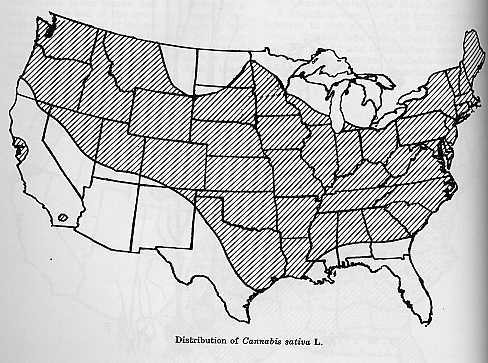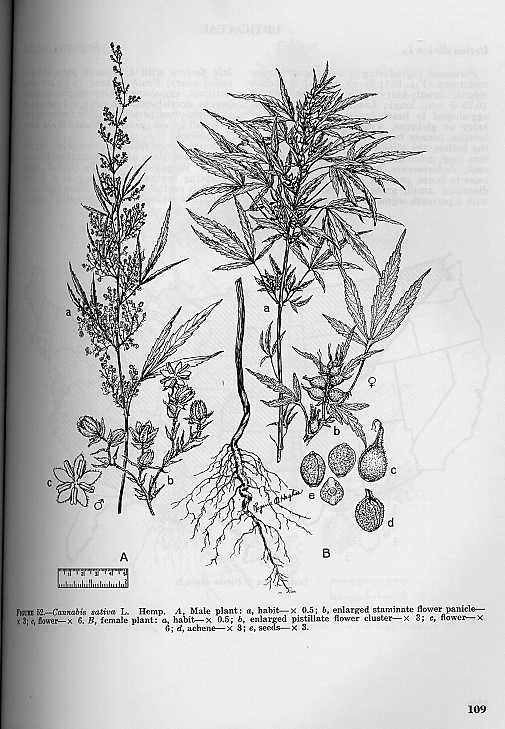
| HEMPOLOGY.ORG: THE STUDY OF HEMP
|
|||
|
|
||
Pubdate: Issued March 1970, Approved for reprinting September
1976
Source: Selected Weeds of the United States. Agriculture Handbook
No. 366. Agriculture Research Service. U.S. Department of Agriculture.
Stock No. 001-000-00751-3 / Catalog No. A 1.76:306
Pages: 108-109
Cannabis sativa L.
HEMP, MARIJUANA
Annual, reproducing by seed (Fig. 52); Taproot much-branched; Plant bushy unless crowded; Stems simple or sparingly branched, 6-30 dm. tall, coarse, somewhat grooved, rough and hairy, the hairs on the upper parts exuding a sticky resin with a characteristic odor, the inner bark of very tough fibers; Leaves opposite, but alternate above, palmately divided, with 5 to 9 hairy leaflets with notched edges; Flowers dioecious, small and green, the male and female flowers borne on separate plants: male plants turning yellow and dying after shedding pollen, male flowers in axillary compound racemes or panicles in the axils of the upper leaves, 5 perianth segments and 5 stamens; female plants vigorous and dark-green until frost, female flowers in spikelike clusters, without petals, in the axils of the leaves; Fruit (achene) about 4 mm. long, ovoid to nearly round with obtuse edges, yellow to olive-brown; Seed oval, mottled-brown, about 3 mm. long. June-October.
Neglected fields, farmyards, ditches, road-sides, moist fertile soil, on wastelands, and fence rows; cultivated varieties grown as fiber crop; chiefly sporadic and derived from foreign packing, ballast lots. Prolific seed and pollen producers; source of marijuana and of hemp fibers. Adventive from Asia. Throughout all the United States excepting the extreme southeastern and southwestern areas, western Texas, and on an area between central Montana and southern Michigan.


FIGURE 52. - Cannabis sativa L. Hemp. A, Male plant: a, habit - x0.5; b, enlarged staminate flower panicle - x3; c, flower - x6. B, female plant: a, habit - x0.5; b, enlarged pistillate flower cluster - x3; c, flower - x6; d, achene - x3; e, seeds - x3.